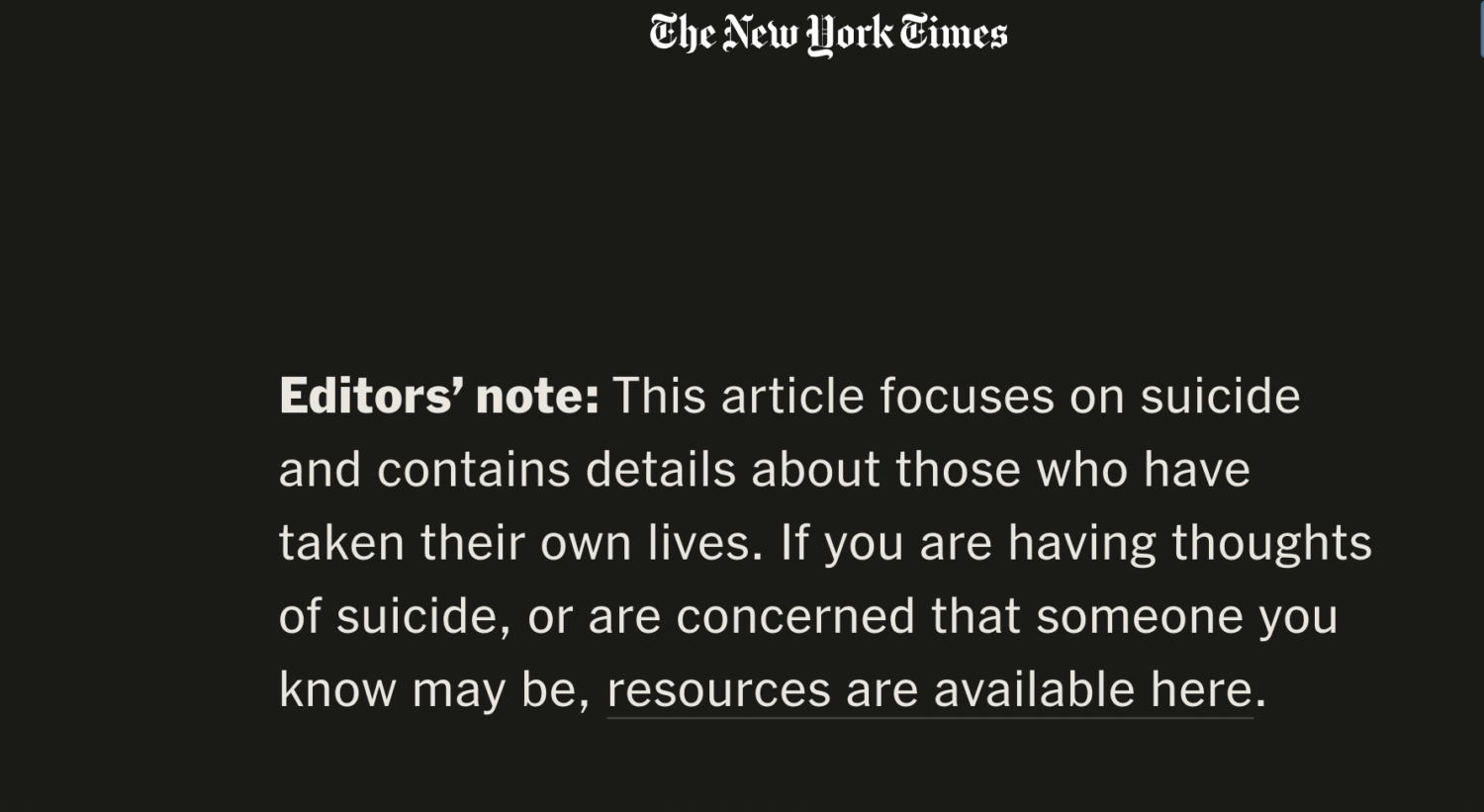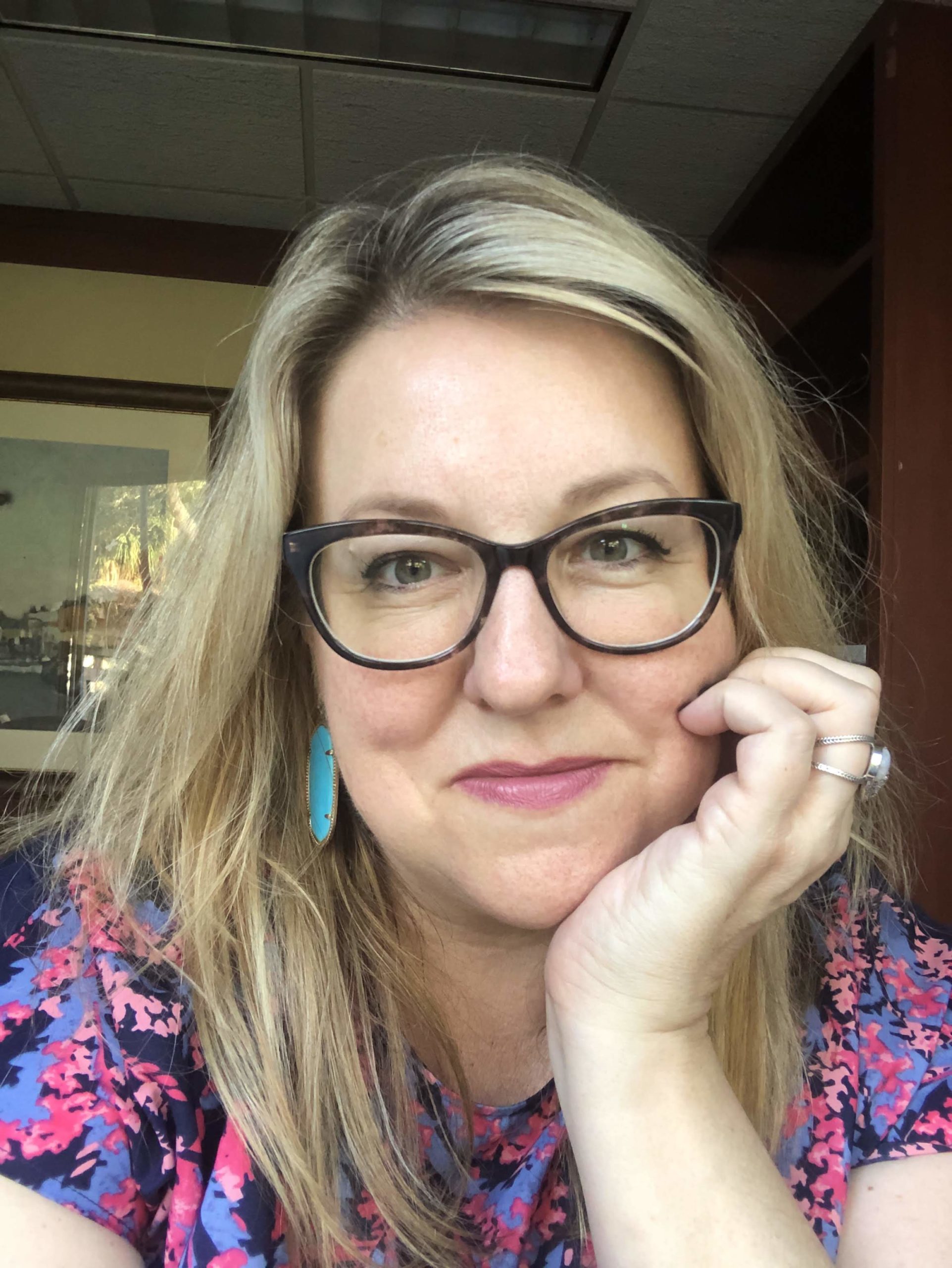The ethical issues running throughout The New York Times’ recent piece, “Where the Despairing Log On, and Learn Ways to Die,” were numerous and complicated.
That’s why the team behind it never stopped talking about them.
Megan Twohey and Gabriel J.X. Dance said they have both had experience and interest in reporting on online harm, especially where children and young people were concerned.
So when they found out about a popular suicide support website, they dove in.
“It wasn’t just that this was a site that was providing explicit instructions and methods on how to die by suicide,” Twohey said in a recent interview with Poynter. “It was an interactive forum.”
Dance and Twohey both said the more they explored, the more they felt a journalistic and moral obligation to report on the site, which they said gets six million visitors a month from around the world — four times as many views as the leading national suicide prevention website, Twohey said.
Among their many ethical considerations: how to write about a popular and dangerous website without driving vulnerable people to it, and how to address the unusual suicide method espoused on the site?
“We also pretty quickly had questions about the people who are running this website, questions about their character and their intent,” Twohey said. “They had gone to great lengths to hide their true identities.”
Dance said that the entire team was diligent when it came to reporting responsibly on suicide. “We were going to have to weigh opportunities for accountability vs. sharing potentially dangerous information.”
The team consulted with industry guidelines, editors, veteran reporters, the standards team at the Times, and medical professionals — specifically, suicide professionals and those who deal with contagion.
Dance said there were no clear answers.
“How do you call attention to a specific website — with the goal of having lawmakers and law enforcement become aware of it — without naming that website?” he asked. “And similarly … how do you (weigh) the risk of perhaps introducing vulnerable people to a new (suicide) method with the opportunity of calling out people who are selling this (poison preservative) to minors online relatively easily? How do you weigh those?”
The team, under editor Rebecca Corbett, landed on naming the website and the preservative once, deep in the article. There is also a lengthy editor’s note about the project at the top of the story with linked resources, and an explanation on their reasoning within the story.
“We also even worked with our search team to make sure that we were being extremely careful not to raise the profile of either the site or the preservative more than absolutely necessary,” Dance said, “while also making sure lawmakers, law enforcement and parents and family members had the opportunity to know what to look out for.”
Twohey said the project was a focus for almost a year, these and other concerns were always front and center.
“Immediately, we recognized that these were going to be two of the biggest ethical issues that we had ever dealt with in, you know, our pretty lengthy journalism careers,” she said.
But she said that the issues weren’t just a matter of naming the website or the preservative — they had to make sure to interact with sources sensitively and write responsibility.
Twohey said that as they got closer to publication, she and Dance met almost daily with suicide experts, who advised them to make sure they weren’t glamorizing anything, that stories included true messages of hope instead of only despair, and that people usually pull out of suicidal thoughts. “There were these broader questions that we were grappling with, honestly, every single day in the reporting of this.”
Twohey said she was struck by the fact that despite the site’s popularity, many families, law enforcement, mental health professionals and even coroners had never heard of the site or the preservative.
“We really felt like this site was very dangerous for vulnerable people, especially for young people,” she said. “All these people who should know about it — from mental health professionals to school officials — didn’t know it existed.”
She said the team came to an understanding that it was more important for those people to be aware of the site, the method and its potential for harm than it was to withhold reporting over fears of driving vulnerable people there.
“We just took this responsibility so seriously,” Twohey said. “This was the most difficult story that I’ve ever worked on for these exact reasons.”
Dance said even the multimedia presentation was carefully examined to avoid exploitation or glamor.
“The sensitivity to storytelling extended from the very beginning to literally the last pixel that was placed,” Dance said. “Throughout it, we paid very close attention.”
One ethical consideration that was never in doubt: Finding, confronting and naming the people behind the site.
“Deciding that we were going to name these guys was the easiest decision in the story,” Dance said. Twohey concurred.
“These guys had constructed and were operating a website that had such a huge reach and was connected to such extensive death and was crawling with potentially criminal activity,” she said. “They had gone to such great lengths to dodge detection and to protect the website. They basically erased almost every trace of themselves from the Internet.”
She said they were eager to confront them, comparing their behavior to operators of criminal websites.
“The last piece of a big investigation like this is going to the subjects and giving them a chance to respond,” Twohey said. “In this case it wasn’t just responding to all of our findings, it was responding to the fact that we had found them and we’re going to name them.”
The journalists’ dogged reporting and some lucky breaks led them to the real identities of the website’s owners, two adult men named Lamarcus Small of Huntsville, Alabama, and Diego Joaquín Galante of Montevideo, Uruguay. Twohey and Dance had tried reaching them on the site and over Twitter, but now they had addresses and phone numbers.
The journalists were with their families at different Thanksgiving events when they called the two men at their homes.
“I mean, I don’t know how you’d explain it — it was very exciting,” Twohey said. “To have worked so hard to figure out these identities and to have it finally clicking in in the final days leading up to publication …”
Dance explained further.
“The reason I say it was very exciting to call them is because Megan and I are in this for accountability,” he said. “Here, you have these two shady guys who’ve been running this website for three years, (linked to) we think hundreds of deaths including kids, and we’re excited to say you know, ‘Tell us why, tell us the reason you’re doing this.’”
Small talked to the reporters on the phone but denied involvement and later cut off communication; Galante hung up and later emailed a denial that he ran the site.
Dance said eventually, the team and their lawyers sent each man a detailed, physical letter.
“We essentially spelled out everything we knew about them and everything we intended to say in the story and asked them, please respond to us, please point out anything that’s wrong,” Dance said.
Galante responded with mostly denials, but Dance and Twohey’s reporting disproved them.
“When we got down to the end, it wasn’t, ‘Are we going to name them, are we not going to name them?,’ it was, ‘Have we done our due diligence so that they’ve had every opportunity to respond to what you’re going to say and say it was them?’”
In the end, it was most important to Dance and Twohey that their reporting shone a light on a dark corner of the internet.
“We’re not just writing a story with the hopes that people will read it, we’re writing a story with the hopes that it can make a difference and that it can have an impact,” Twohey said.







